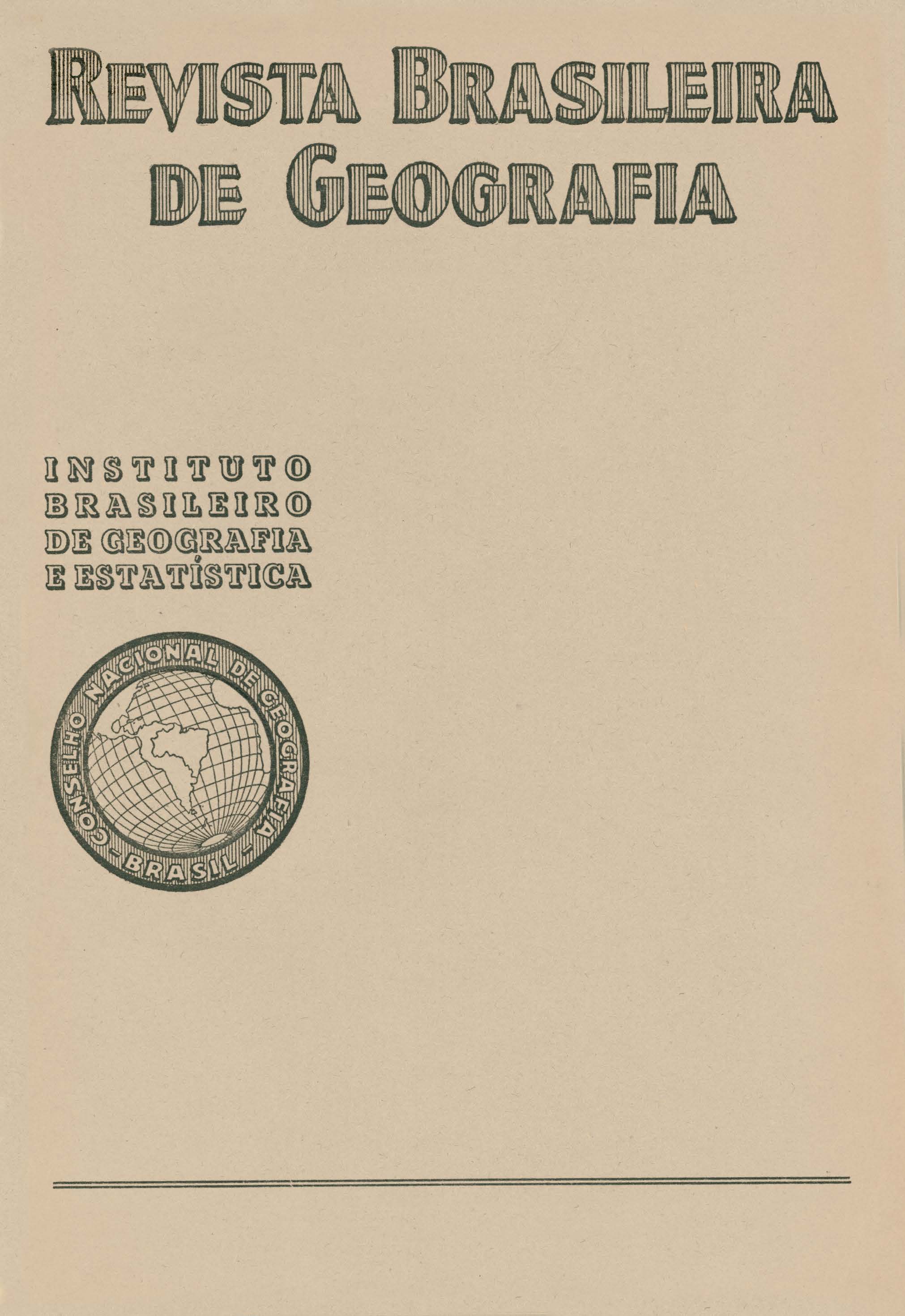Observações sobre a Guiana Maranhense
Keywords:
Maranhão, Colonização, Geografia Regional, Geomorfologia Litorânea, GeologiaAbstract
The present article written by an ancient professor of Geography, encloses some interesting considerations about a region of the north of the Country, little known, but very curious and full of attraction to geographers and naturalists.
The title reveals a conceit some time ago published by. the geologist Glycon de Paiva, and now once more divulged by S. Froes Abreu - which considerates part of the littoral from the state of Maranhao as Jelonging to a same physiographical unity, generally designed by the name of Guyana. The writer exposes some data collected during a trip through the region pointing out the principal aspects reporting to geological constitution, to climate, to physiography, to natural ressources and to peopling. Travelling in the interior of the country. on boat or on foot, the author gives us in this article a real fragment of his note bock, which may serve as standard to young geographer whom initiate practical life. In those distant sites with no maps, ~o points of coordenates determined, sketch with travellers observations, and rapid surveys with magnetic needle and pedometer. are precious elements to geograohy and cartography of the ;region and should be undertaken by ali travellers, even when in rapid trip as happened to the author of this article. Describing physiographic as Peêt of the visited region, Froes Abreu shows that it is a large plain with low and muddy littorâl extremely cutted by large mouthed rivers and by the presence of several small and low islands sticked to the coast.
The author makes a rapid description of the geological formations, ressaulting that there is an ancient crystallin embasement which arises some kilometers from the coast, and that shows itself very eroded and planed. Northward appear some schists very metamorphized and greatly decomposed; they desappear under a clay cover that shelters large part of the plain near the coast. In some places as in Carutapera, were found calcareous layers with fossils that prove terciary age. Eocenic. and that deserve special attention, on account of the probability of the existence of petrol layers in the region. The author beyond the large collection of typic photographs he offers in this article, presents two interesting schematic designs. One of them reports to the· formation of mangroves. showing the two principal species and its relative position - red man.-:rove. with serial rooths occupving always the most salted zones in strait contact with the tide; the "siriubais" behind-hand, and bathed by less salted waters.
The other design represents a diagram. showing the typical physiographic aspect of the coast of the Guyana in the. state of Maranhão, where are figured the vegetal formings, the relief and the geological constitution. '
Pointing out the' principal caracteristic of climate, the author results the great pluviosity end intense relative humidity which turns ease the decomposition of the rocks and causes very noor wholesome conditions to man.
Studying the coast form, the author describes its type, resulting the mainly caracteristics which place it in the rank of the coasts in way of emersion, low, muddy, and suffering tide influence.
In his observations upon vegetal cover, the writer shows that there is a forest zone which belongs to the Amazonian type, with the "heveas", the "cumarú", the "copaiba" and timbers, and that towards the south is substituted by a half-xerophyllum vegetation proper of the plateau of the interior of Brazil. The forest zone, near the littoral is substituted by fields where only the grass play important part; soon after the soil is sub mited to the mangrove vegetation that is described by the author with details. Examining mineral ressources the makes rapid apreciations about the exploitation of the auriferous "placers" and the primary couches, located in the center; he studies the deposits of bauxite and laterite which were lattercly phosphatized; finally, the author consecrates a few lines to the study of the possibility of petrol existence in this region, in relation with the terciary layers which were there found. Concluding his work, the writer studies man occupation. painting a general aspect of the region and supporting his considerations in the opinion of names, like Raimundo Lopes, to prove how ungrateful is this zone to man's conquest.
Refering himself to the actual population, the author terms its present conditions. as "Garimpagem civilization" (diamants. searching in the rivers), and thinks it insufficient to conduct permanent civilization mood due to the inconstance of the people who have no idea of sticking to the zone. The author concludes that the zone has no sufficient attractives to encourage a conquest mouvement to barbarity, and that it is necessary that the young generations of geographers and explorators study the zone, seeking for richesses which may hearten Man to fight against such a rough nature.






